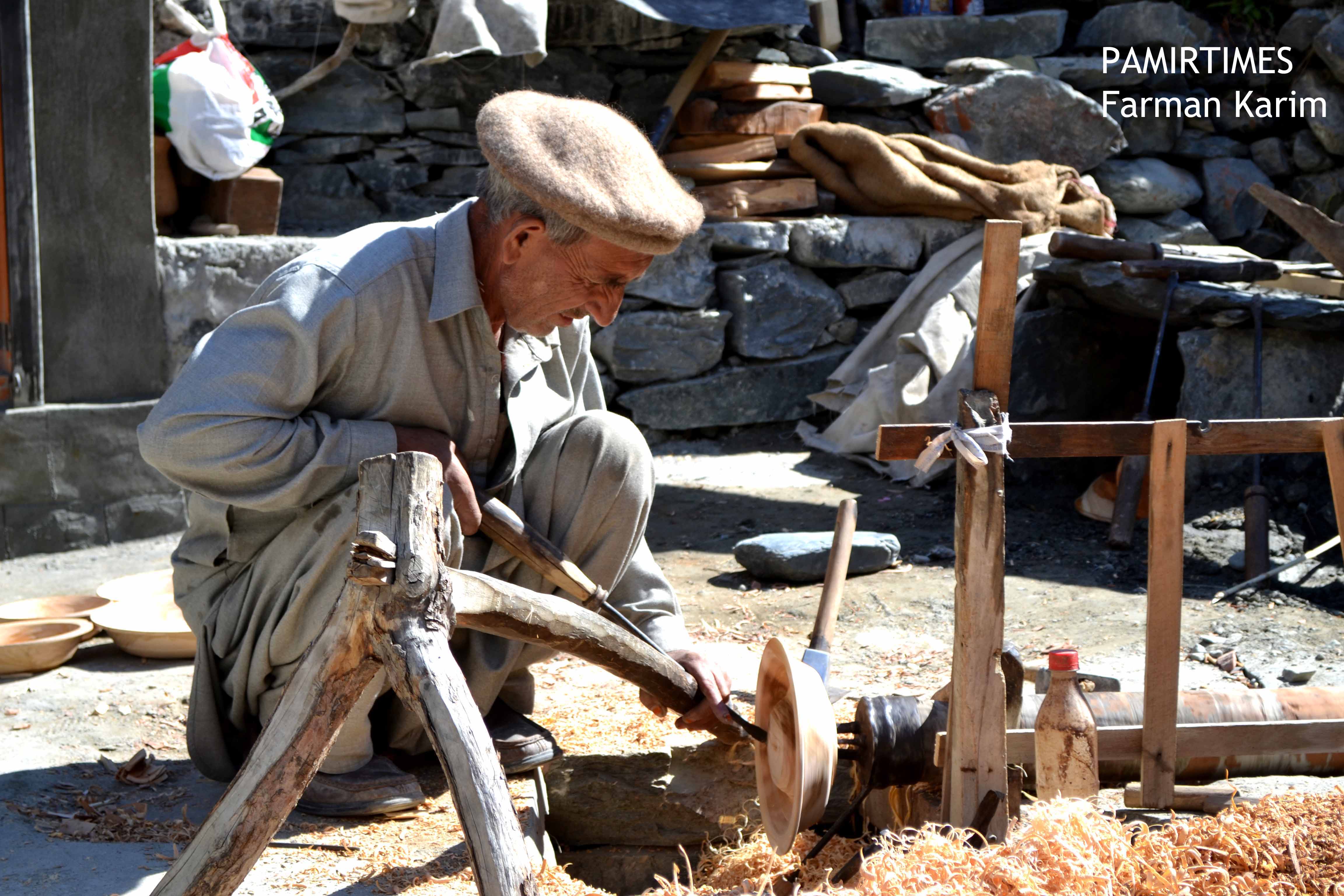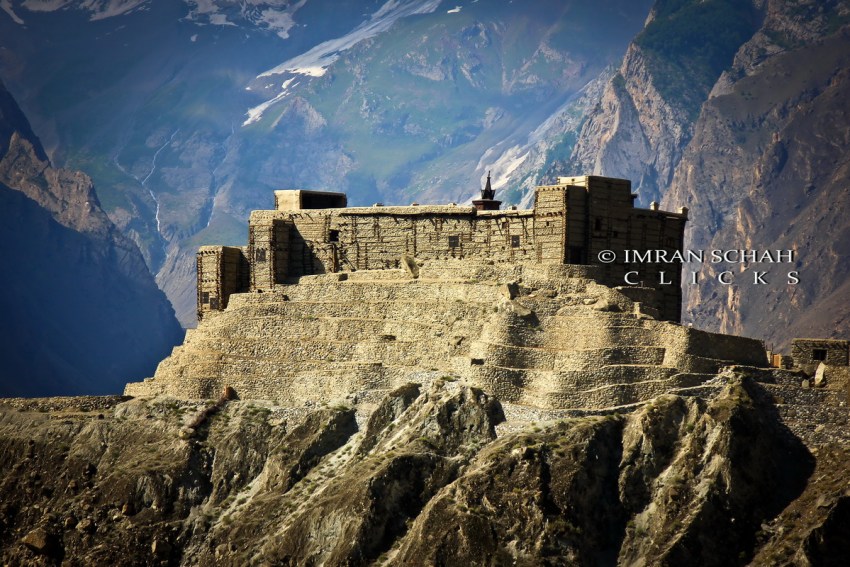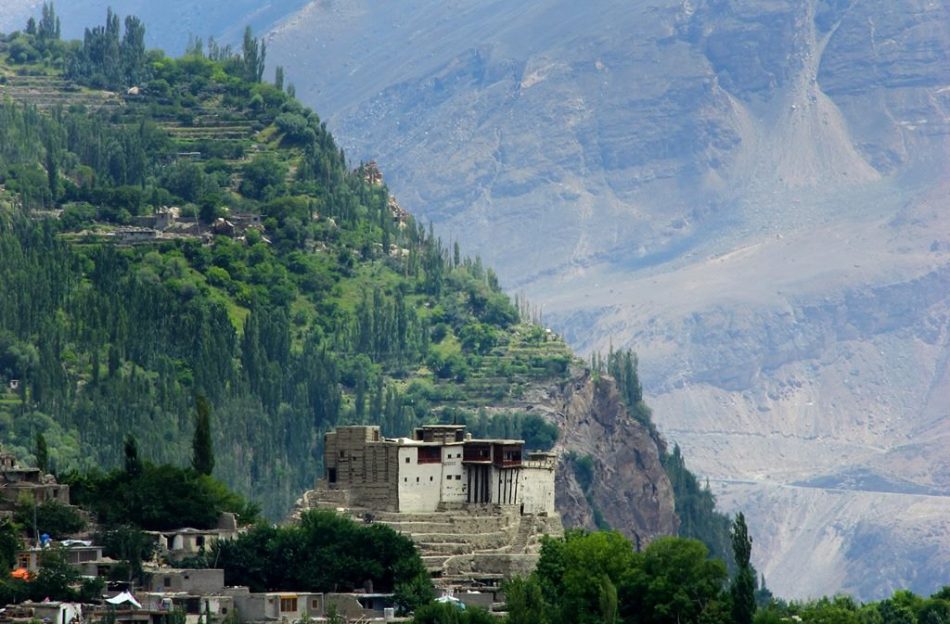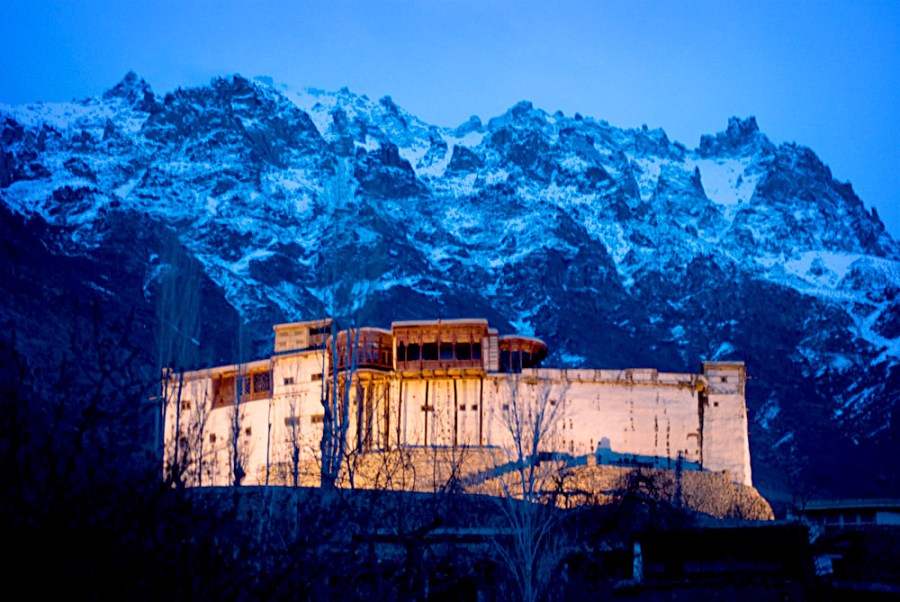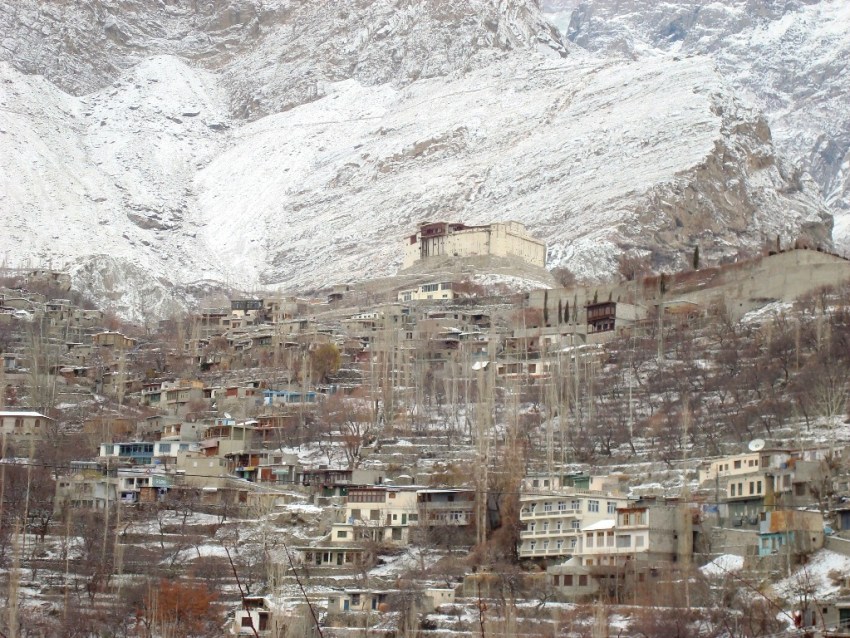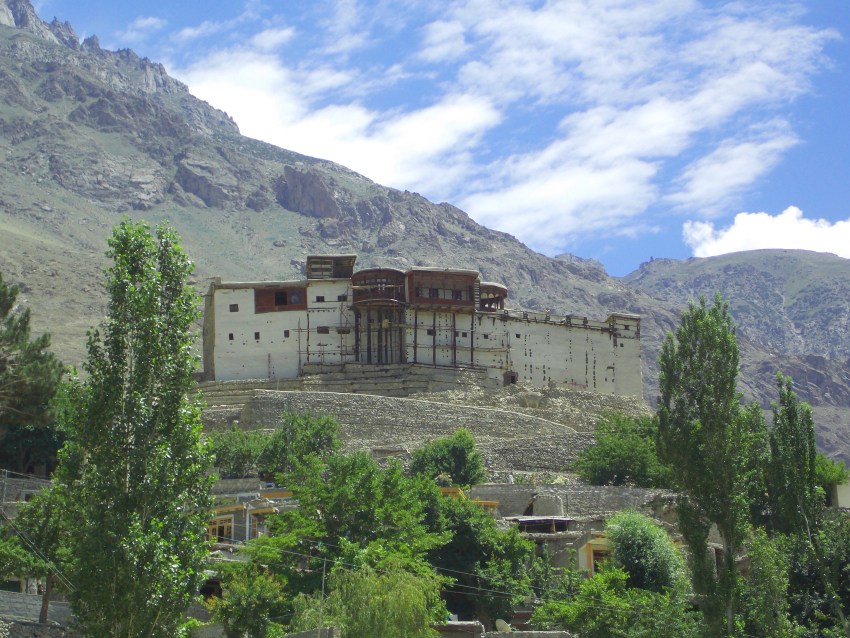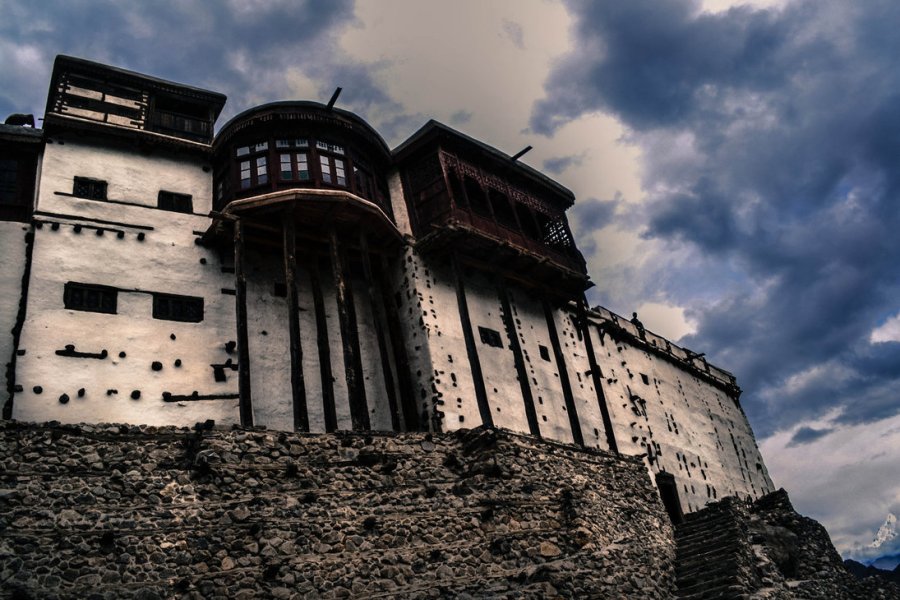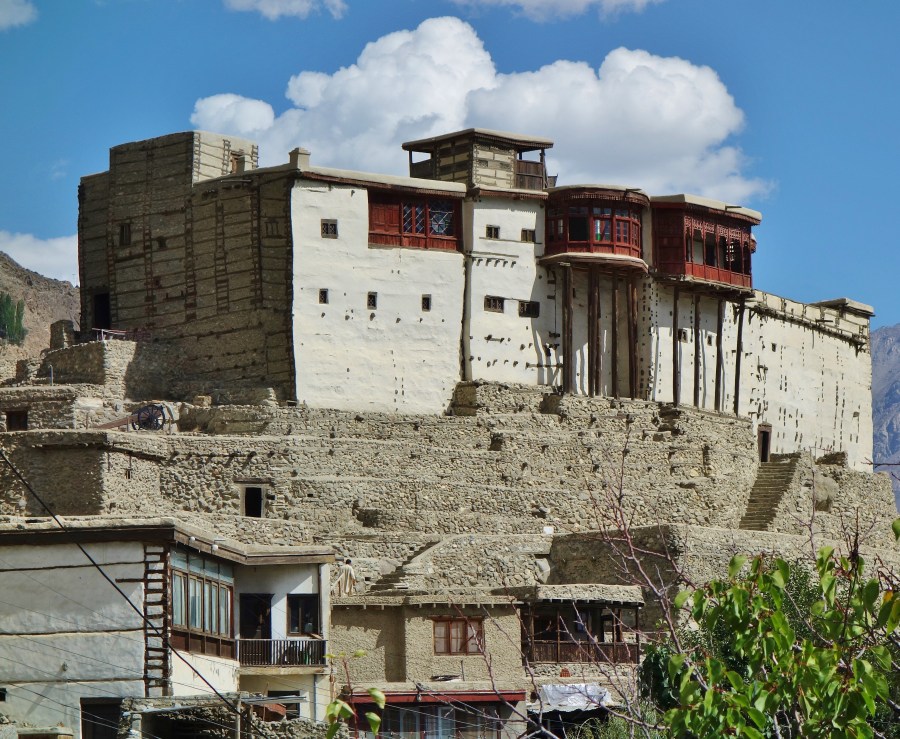A man from the Hussaini village returns home after playing a cricket game. On his forearm, he wears a sleeve that doubles as sunburn protection and fashion accessory
Young men and women began leaving to study in these cities, and they came back for summer holiday dressed in new, hip fashions. Shops multiplied along the road, selling new spices, sugary snacks, and sodas. Biryani rice, a favorite dish from Punjab, now often replaces the traditional turnip soup or buckwheat pancakes during celebrations.
But despite what I’ve seen change on the surface, the spirit of Gojal is very much the same.
“In these remote parts, our relationship to our honored guests has never changed,” Jan says. “You know, our kids go away to the cities, but deep down we are just mountain farmers living off the land. Sometimes we feel sadness for the way the Western world thinks of us, but we would rather joke about it than be bothered by it.”
The day after Alvi’s going-away party, we climb a nearby hill where young people are gathering. In the distance, we see the peak of Tupopdan—which means "sun-drenched mountain" in Wakhi—as it towers above a green oasis and the Passu village. A road winds through a barren valley—a branch of the old Silk Road. Beyond these peaks are the deserts and plains of Central Asia, China, and Afghanistan.
A full moon rises over the Passu village and its glacier, and the Karakoram Highway snakes its way through the landscape.
Some of the young men on the hill sport designer t-shirts, jeans, styled beards, and ponytails (hipsters know no boundary). Others wear the traditional white pants and long shirt. Four young men bring up a huge speaker and blast a mix of dancehall and traditional music.
As we dance, a group of girls watches us, laughing. Others ignore us, focusing instead on a game of volleyball. Alvi points to them.
“They are all going to school and most of them speak at least four languages,” he says, as our conversation switches between English, Wakhi, and Urdu. “We have a famous saying: If you have two children, a boy and a girl, but you can afford to educate only one, you must give the education to the girl.”
Ismaili Scouts return home after a day’s excursion to a nearby village.
A few days later, Esar Ali, dressed in a suit and ready for a family wedding, climbs a boulder, away from the crowd. “The recent changes,” he says, discussing village life, “they come a lot from our education. Nowadays we go to universities outside of our villages, in the cities or abroad.”
“But they also come from this,” he adds, pointing to his phone. Smartphones and mobile data networks have changed how the people here relate to the outside world, and to their neighbors.
“I first saw Shayna in a town near my village,” Ali says. “There is a decent 2G reception there."
Young Wakhis dance after celebrating Imamat Day, which marks the anniversary of the day their present (or Hazar) imam succeeded his predecessor. These young men study in big cities away from the mountains, and for them, this celebration is a time to reconnect with their homeland.
A Wakhi home sports an embroidery of Prince Karim Aga Khan IV, the current imam of Ismaili Muslims. He has an estimated 15 million followers in more than 25 countries, including 20,000 in Gojal.
“We started messaging, agreeing on a time to talk when no one is at home," he says. "In our tradition, to be with someone is something sacred. So while we slowly establish our relationship, we never want to offend our elders. Phone or no phone, we have to keep our customs alive.”
Ali is now married to Shayna. This courtship would’ve been much different 10 years ago, but not because he wouldn’t have had a mobile phone. Back then, “our parents would pick the bride or groom,” he says. “But now it’s practically all love marriages, or rather
arranged lovemarriages. We simply suggest to our parents the boy or girl we want to marry.”
There are two long lines in front of the wedding house; men on one side, women on the other. An elderly lady, her white veil flowing on top of an embroidered skullcap, welcomes me. She takes my right hand and kisses the top of it. I kiss hers in return; it’s the Wakhi way of greeting each other. I walk down the line, asking the traditional “How is your health, my sweet mother?” to each of the ladies.
It’s a typical mud house, and inside, young men are standing next to a gigantic pot of food; Ali steps up and says he hopes I’m hungry. “They are making
bat for over 200 people,” he says, referring to the porridge-like food in the pot. “We will eat that with boiled sheep meat and lots of chai.”
"We first met on social media, and we slowly fell in love," say Esar Ali and Shayna, who married 11 months ago.
My wife and two young sons are outside somewhere playing cricket. When I look for them, I see my wife being pulled into a group selfie with the young bride and her friends. They ask me to join in.
Here, there is no such a thing as an uninvited guest. We’re joined by our friends Emmanuelle and Julien from Paris, and they’ve brought their two daughters. “With the current world situation, people thought we were joking when we were telling them that we were going on holiday to Pakistan,” Emmanuelle says. “We got worried too and almost called off the trip.”
But Emmanuelle says she’s glad she didn’t cancel. The scene is nothing like what she assumed.
“I mean, if you ask someone back home to imagine life in a remote mountain region in Pakistan, do you think they will picture this? This place is really doing something to me; it’s making my soul grow.”
Coming here again and again, this tight community always humbles me. Now, as external changes increasingly permeate daily life and relationships, Gojal has planted a foot in the modern world while retaining its traditions and ability to inspire. Traveling in places that we only know little about—or hold wrong ideas about—puts life into perspective. I hope the grace of this place will touch many more people.
--------------------------------------------------------
to be continued...
Shortly before reaching Passu village, a trekker walks along a hanging bridge across the Hunza River.
http://news.nationalgeographic.com/2016/10/gojali-pakistan-islam/
@Levina ,
@Taygibay ,
@Arsalan ...

